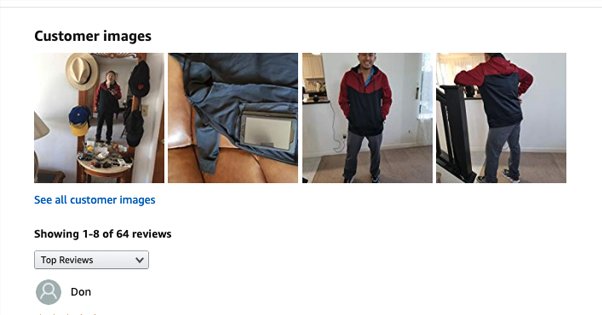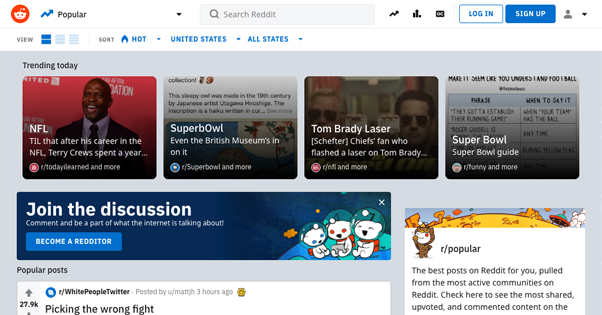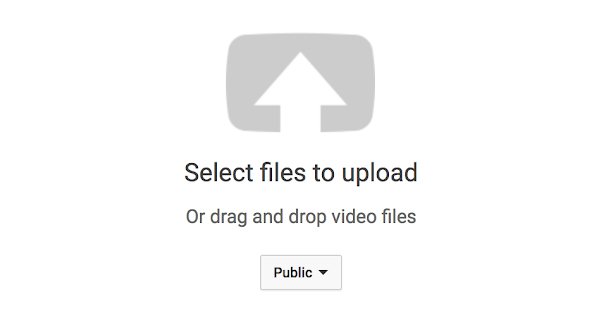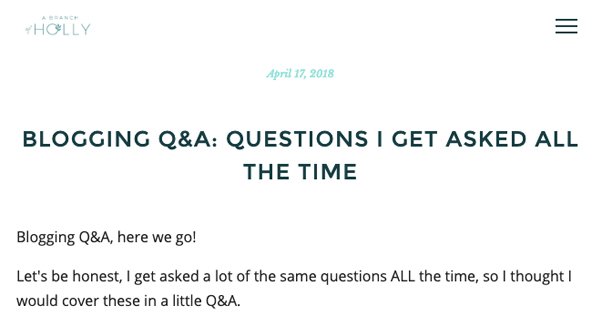What Is User Generated Content and Can It Rank Well?
Published by Drew Hendricks • Content Marketing • Posted February 4, 2019 ContentPowered.com
ContentPowered.com
The concept of user generated content is not new. Far from it, in fact. The concept of “word of mouth marketing” was pioneered in the 1970s, but to be honest, the fact that people trust recommendations from real people instead of salesmen goes back centuries if not millennia. As long as humans have had both language and commerce, we have instinctively distrusted marketers, and for good reason. After all, they have something to sell us.
Of course, today, we don’t really care about the 4-star reviews left on the walls of the pyramids or engraved in stone tablets unearthed in Pompeii. We’re concerned with the content people leave on your storefront, submit to you via email, or deliver to you on social media.
User generated content is effective because it comes back to something called social proof. I don’t mean social proof in the “this post has 10,000 Facebook likes, it must be popular” way. I mean social proof in a more mechanical, survival instinct sense.
If you see someone trip and fall, or slip on some ice, or be stung by a swarm of bees, you instinctively know to avoid that area, because of what happened to the other person. This is social proof that something bad lurks in that area. Sure, maybe they tripped on their own shoelaces, or there was barely any ice, or they brought their own bees for some reason. That’s not going to be the norm, it’s an exception, and you’re better off disregarding rare exceptions.
You trust the experiences of this other person, even if you’ve never met them. With poor consequences, you avoid the situation. With good outcomes, like finding a delicious fruit hidden just out of sight, you want to get in on that. Modern social proof works the same way, inspiring our base instincts to trust each other, even if we intellectually know we perhaps shouldn’t.
In commerce, social proof helps us make decisions about products where we don’t have a lot of personal experience. When that social proof comes from people we know, it’s very powerful. When it comes from people we don’t know, it’s less powerful, but still effective. When it comes directly from a brand, we distrust it. We all worry about the snake that offers us that tasty fruit, right?
What Is and Isn’t User Generated Content?
In the modern world of marketing, we consider user generated content to be specific types of content. What kinds of content? You’d probably recognize it if you saw it.
The broad definition of user-generated content is “any content generated by a user outside of the organization.” It’s basically free publicity, since we only count positive user generated content in the definition. Negative content, like bad reviews, aren’t beneficial so we don’t usually consider it part of marketing.
Basic examples of user generated content include things like selfies while wearing a branded hoodie, photos of a product, or product reviews left on a site like Amazon. One of the most brilliant recent user generated content marketing plans in recent memory is Coke’s cans with names on them. People around the world share photos of themselves with “their” can. It created a global product hunt and a ton of memes ranging from a Coke nativity scene to jokes about people with uncommon names.
Anything that users influence or create can be considered user generated content, however. Warner Music Group set up a battle of the music videos, with one-versus-one brackets to eliminate videos until a winner was chosen. The entire tournament structure was based entirely on user input, making it user-generated content.
On the other hand, content that your marketing team produces isn’t user generated content, even if you make it look like it. Reviews you leave for your own products, testimonials from your own employees, and so on just don’t work. Why? When people recognize it as marketing content, they’ll inherently distrust it.
Why You Should Use UGC
It’s no secret that user generated content can be a huge benefit to your marketing. Reviews are a massive part of e-commerce, for example, which is why there’s such a focus on them even on major sites like Amazon. Yotpo found that overall across all studied industries, people viewing user generated content are 161% more likely to convert.
User generated content also has a huge impact on SEO, and in ways you might not expect.
User generated content creates more on-page content for search engines to pick up. This is a big one, and it applies equally to blogs and to e-commerce storefronts. Amazon has reviews for their products, and while they aren’t necessarily easy to index, you can bet they’re great for convincing other people to buy a product.
For blogs, where SEO is more important than testimonials, user generated content takes the form of comments. There’s a furious argument in the marketing world over whether or not you should keep comments enabled on your blog. Neil Patel makes the good argument – that I believe as well – that comments are a ton of additional content on your site. Sure, some comments suck, and a lot of them are spam, so you have to monitor and moderate them, but the benefits can be great.
User generated content can reach long-tail keywords you wouldn’t otherwise reach. From a purely SEO perspective, user generated content is still content on your page. Unless you’re using a weird commenting system that doesn’t allow indexation of the content – like old versions of Disqus that had such issues – all of the content in the comments is picked up by Google. That’s why people leave spam comments, right? If Google couldn’t see the comments, the spam links wouldn’t matter.
Google picks up your comments and the keywords people leave there, intentionally or otherwise through their discussion. Since the discussion is, by definition, relevant to the topic of the blog post, it’s like getting other people to write expansions to your post without needing to pay them. It’s hugely beneficial.
User generated content can keep older pages alive with fresh information. Keeping an older page fresh isn’t always at the top of our concerns as marketers, since we generally find it easier to cover new content and expand our blogs than to update older content. The more time you spend on older content, the less time you’re spending on new content. New content generally has better benefits for the time invested.
The benefit of comments, then, is that users are updating your old posts for you while you’re working on new content. It doesn’t take nearly as much time to engage with a few comments as it does to come up with ways to update and expand old posts. You get the best of both worlds, without having to invest the time or money.
User generated content helps other users engage with and promote your brand. As other people engage with your brand, they become brand ambassadors. These engaged users have an affinity for your brand and are willing to promote you to their friends and family, when the opportunity arises. They have more trust within those circles than your usual selection of marketers, so you end up with higher conversion rates amongst that group of people.
The more user generated content you have in your orbit, the easier it is to draw other people into that orbit. There’s more for them to engage with, not just in terms of topics and content, but in terms of other engaged people. Everyone likes to know they have a group of people sharing their interests, whether it’s sports fans or people who frequent the same restaurant.
User generated content has a snowball effect over time. Just like other forms of white-hat SEO, just like running a blog, just like building a social media platform, user generated content snowballs. You might start with a blog that gets 0-5 comments on posts on average, but those people tend to stick around. You draw in more people, and they find people interacting in the comments, and it all continues to build.
User generated content shows that you pay attention to your customers. Nothing is worse than an inattentive brand. It’s not just customer service; when someone comes to you with a problem you want to solve it, sure, but when they come to you with praise you want to thank them just as much. By engaging with and promoting user generated content, people feel that you’re paying attention to them. When the user generated content is generally beneficial and positive, it tells other users that you must have a good product; if not, why would people be engaging with you in a positive way?
User generated content is basically free. You have to put in the time to moderate away bad comments, and you have to take action to solicit positive reviews, and you have to come up with campaigns to make use of user generated content, but all of that is minimal compared to so many other marketing campaigns.
User generated content can open up new doors. Remember, the people who are engaging with your brand aren’t necessarily just basic customers. Many of them might have blogs or businesses of their own, and some of them can be great opportunities, for partnership, funding, networking, connections, or other boosts. You never know who might invite you to guest post, offer an enterprise-level contract for your services, or decide to promote you on their site.
User generated content gives you valuable feedback. You can learn what the average skill level of your users is, so you know whether you should be increasing your baseline estimate of their knowledge, or decreasing it, and tailoring future content to that perspective. You can learn to see where their pain points are and what makes them happy or excited. You can discover new questions that you can answer in future blog posts. You aren’t just getting value for the post that gets engagement, you’re getting value for future posts as well. Plus, people can back up your opinions with their own experiences or case studies, or they can refute you with their own evidence.
How to Use User Generated Content
A lot of user generated content circulates on social media these days, but blog comments are a valuable hub as well. If you want to rank well, though, you need to take advantage of as many avenues as possible. You don’t want to be limited to just one channel; you want to give your audience as many ways to engage as possible.
Some ideas might include:
- Hashtag campaigns that allow users to submit their own photos or videos, which you can feature both on social media and in a “best of” blog post.
- User-driven voting tournaments or polls, which can help narrow down the target interests of your users while creating a fun and interactive way to engage with them.
- A Q&A session. Post on social media and on your blog to solicit questions for a week or so, and then compile a video, blog post, or livestream where you go through them and answer them. Make sure to credit the people who originally ask the questions.
What you can’t do is simply throw up a “Instagram post of the week” blog post with a couple of embedded posts and call it good. Remember, SEO doesn’t go out the window just because you have users posting their content now and then. You need to take steps to make sure your content meets a minimum baseline, and use the user generated content as icing on the cake.










